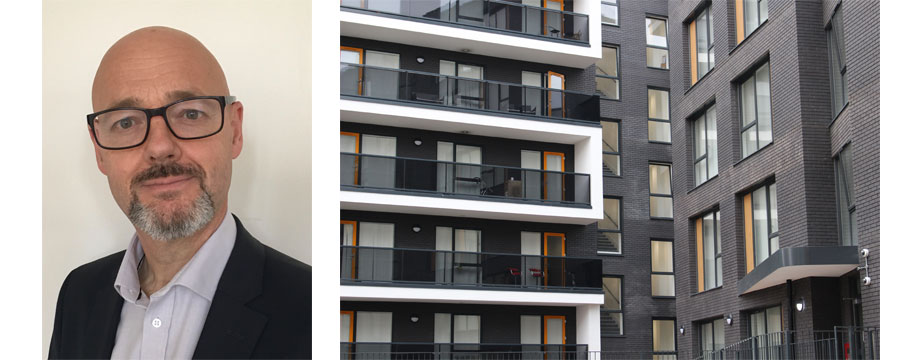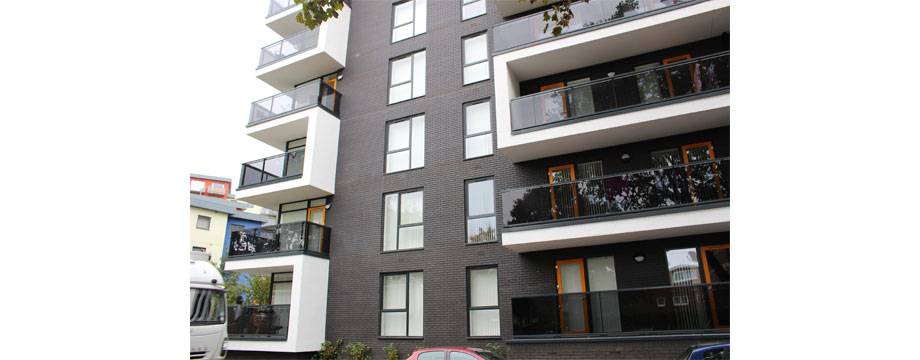Noise pollution can have a significant impact on resident quality of life, so should housing associations and commercial contractors be doing more? HA Magazine reports...
Noise pollution was recently listed as second only to air pollution by the UK’s Chief Medical Officer for its negative impact on public health. Studies show that exposure to unwanted noise can contribute to sleep disturbance, hypertension and even diabetes and heart disease.
So, given this, should housing associations and their supply partners be re-thinking their approach to move beyond requirements in Approved Document E to deliver a step-change in acoustic performance - particularly in future developments?
“The leading housing associations and contractors are heading in that direction already”, says John Duckworth, Head of Commercial Sales, Deceuninck. “We’re working regularly to window and door specifications of 42db – and have been asked for as much as 49db noise reduction.
“The bigger challenge is balancing acoustic requirement against budget.”

Deceuninck became the first window systems company in the UK to commit to systematic testing across its product range in 2018, a project delivered in partnership with the University of Salford, a UKAS accredited testing facility.
Three-years on and Deceuninck holds certified acoustic test data across its commercial window and door offer, including Casement, Tilt-and-Turn and Fully reversible windows.
Following this up in 2020 to become the first window systems company to sign up to BFRC’s new Noise Reduction Rating scheme, Deceuninck operates a dedicated commercial manufacturers scheme, working with window and door fabricators with expertise in supply into commercial projects.
“There’s obviously a substantial difference in the db rating of the IGU and the expected performance of the window as a whole, including the glass and the frame as well. The IGU Rw rating is in a sense meaningless, because ultimately it’s the combined frame, IGU and quality of the install that’s going to define in situ performance”, John continues.
Deceuninck’s acoustic test programme - headline results:
• Traditional 2500 Series – equal glass sightlines deliver a clean minimalist design, achieving maximum RW rating of 42db.
• Heritage 2800 Series – sculptured design replicates the elegance of traditional timber with the efficiency gains of PVC-U including u-values as low as 0.91W/m2k. Maximum Rw value of 42db.
• Contemporary 5000 Series – Deceuninck flagship commercial system the 5000 series to extend the design potential of PVC-U using patented glass fibre technology, removing the requirement for steel reinforcement, increasing thermal efficiency and reducing weight. Maximum Rw value of 46db.
• Fully Reversible Window - Designed for medium to high rise developments. Maximum Rw value of 42db
“The point is you don’t need to default to a very expensive acoustic laminate, you can achieve incremental gains by moving from a standard unit to laminated safety glass and still make gains in acoustic insulation” he adds.
“As always there’s a balance between cost and performance, but what our test programme has shown is that you can make lower cost changes to specification and achieve a significant increase in acoustic performance over a standard specification.”
Legislation governing requirements on acoustics is driven by DEFRA’s Noise Policy Statement for England. This provides the foundation for local planning policies, which states that housebuilders should “promote good health and a good quality of life through the effective management of noise . . . and mitigate and reduce to a minimum potential adverse impacts resulting from noise”.
Approved Document E translates this into a minimum requirement for sound insulation between properties. “Building regulations are about minimums. What we’re seeing is a growing movement to push beyond what is required to specifications which can deliver a positive impact on residents’ quality of life.”
This is something which has been raised by the Green Building Council, which argues that a gap exists between a minimum requirement in Building Regs. and the realities for residents. This makes it one of a growing number of voices calling on planning authorities and specifiers to recognise the impact of noise on residents, and to reflect it in specifications going to planning.
“The acoustic performance of windows and doors is more important as development becomes increasingly focussed on brownfield sites and urban centres”, adds John. He continues: “Planning policy currently encourages mixed use developments.
“That makes acoustic design an increasingly important element of specification. The reality is that testing of windows and doors is not something every manufacturer does and accessibility to data can be a problem”, he argues.
The Institute of Acoustics, Association of Noise Consultants and Chartered Institute of Environmental Health has set out a series of best practice guidelines for new developments. These draw reference to an over reliance fixed lights to meet acoustic performance requirements – something which it argues, negatively impacts on residents.
“Using fixed unopenable glazing for sound insulation purposes is generally unsatisfactory and should be avoided”, it states, “occupants generally prefer the ability to have control over the internal environment using openable windows, even if the acoustic conditions would be considered unsatisfactory when open.”
John continues: “Housing association developments can be higher density and an awareness of the challenges that that creates is important - but also the options available to support cost-effective - and effective – specification of windows and doors.
“We’d say get in touch, because with a fully acoustically tested range of tilt-and-turn, fully reversible and casement options, we’re able to help.”

Case study: Abbey Road
It may have been Abbey Road, Enfield, rather than Abbey Road St John’s Wood of Beatles fame, but acoustics still played an important part in specification.
Delivered over 12-months, and manufactured by Fastframe, 1,100 Tilt-and-Turn windows and doors in Deceuninck’s 5000 system were installed in a two block five-storey development for London and Quadrant.
Supplied in Decoroc Anthracite Grey, which is designed to offer a perfect match to Deceuninck’s aluminium systems offer, plus bespoke daffodil yellow doors as defined by the architect, specifications were adapted to reflect the potential impact of noise pollution on residents.
This included the supply of 250 windows which were required to achieve an Rw rating of 35db plus Secured by Design, achieved using IGUs manufactured in a 6.8 laminate 18mm spacer and 4mm toughened combination.
Deceuninck’s 5000 series is also available in Linktrusion, Deceuninck’s glass fibre technology, and can be manufactured without using steel reinforcement, making the system up to a third-more energy efficient than standard windows. Fully recyclable at end-of-life, windows manufactured using Linktrusion also deliver up to 40% savings on materials and weight.
Call 01249 816 969 or visit the website for more about Deceuninck’s commercial range and commercial work. You can also download Deceuninck’s full product portfolio from the NBS National BIM Library here.
- Log in to post comments













